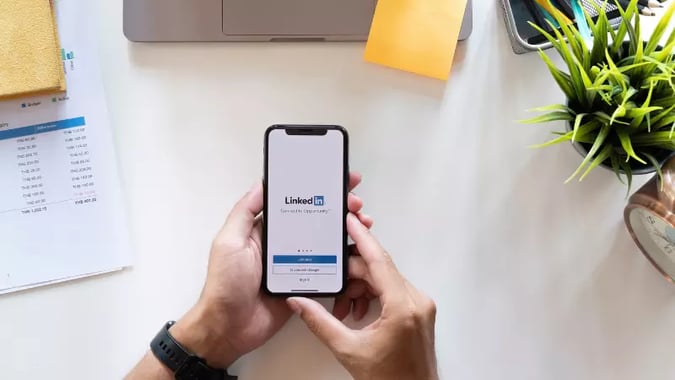
How to optimise your LinkedIn profile for career opportunities
By: Natalie Rogers

Getting your LinkedIn profile up-to-date and optimised is one of the most important things you can do as part of your job search – think of it as an online version of your CV, to help you build your network and your personal brand, connect with potential employers or like-minded individuals.
In recruitment, just like in online dating, it’s an essential to have a 10/10 profile if you want to get noticed.
Hiring managers and recruiters use LinkedIn regularly to search for potential candidates by using keywords to search for skills that are relevant to their clients’ needs. So it pays to keep your LinkedIn profile up to date in case your ‘perfect role’ arises while you’re not actively applying for new opportunities. Having an up to date and clear profile will help recruiters to understand what your role or background looks like, meaning they are more likely to reach out, as well as ensuring the role types they are talking to you about will be more relevant.
So how do you optimise your LinkedIn to work best for your job search?
There’s much that you can do to make your LinkedIn profile an active part of your job search. Here are my top ten tips:
Top ten ways to optimise your LinkedIn presence
1. Create a professional headline
Your headline (the text underneath your name) is the main piece of information people see when you appear in search results and the first thing recruiters see when they go to your LinkedIn profile, so make sure you have a relevant and up to date professional headline, whether that’s your current role title or a summary of your overall skills or background e.g. “Strategic Marketing & Communications Leader” or “Experienced Marketing Leader across FMCG, Retail and Consumer Goods”
If you aren’t working, it’s worth including a subtitle along the lines of “Now Seeking New Opportunities” so potential employers can see immediately that you are open for opportunities and the types of roles you’re looking for.
For example, “Talented Public Relations Manager | Now seeking new opportunities in the FMCG sector”
2. Include a professional photo
It’s always a good idea to include a photo but make sure it is current and professional – keep in mind that recruiters and hiring managers can tell if you’ve cut out your bestie from a night out photo or if you’re wearing your wedding suit, so make sure you’re using a clear, professional headshot.
3. Use keywords throughout your LinkedIn profile
I often tell my candidates, ‘you can have five people in a room with the same job title and their roles are all completely different’.
Therefore keyword optimising your profile is one of the best ways to ensure your profile appears in relevant LinkedIn searches. Think about the keywords recruiters and hiring managers are looking for when searching for someone with your experience and make sure your profile is rich with these terms.
Keywords can include role titles, discipline or industry-related terms and experience, capabilities and skills. When adding keywords, it’s good to think of the words someone with only a basic understanding of your role might use and include variations of keywords terms. For example, if you are a Brand Manager with FMCG experience, you might use keywords such as “FMCG” “fast moving consumer goods” “NPD” “new product development” “innovation” “snacking” “better for you”.
Be sure to include the keywords you want to be found for in various sections of your profile – specifically your summary, role titles, and career history are all good areas to optimise. Also, make sure you proofread before posting. No one will find you if you’ve described yourself as a “product manager”. Tools such as Grammarly can be helpful for highlighting spelling and grammar mistakes online. When adding keywords, it’s important to not ‘stuff’ your profile; only include keywords in an authentic way that makes sense to the reader.
4. Make your personal summary count
When a recruiter or hiring manager lands on your LinkedIn profile you want to ensure they can quickly and easily understand your skills and experience to figure out if you’re right for the role they’re recruiting for. Include in your summary a past, present and future overview, using relevant keywords as mentioned. Think of your summary as your 30-second elevator pitch. If your summary is all they read, what do you most want readers to know about you? What are your key skills and career achievements?
Also – this is your spot to put in a little flavour, to help someone understand your personality or culture fit.
5. Complete all sections of your LinkedIn profile
Make sure your current position is up-to-date and includes your title, company name, and the time period you have worked there. It’s also important to update contact details and complete the work history section of your LinkedIn profile and talk to your experience in each role with an overview of your time in the business, or ownership in your role including key brands, channels, portfolio overview, leadership remit etc.
You can also include travel and maternity leave to explain any gaps and also include end dates if you have wrapped up in a role.
Remember, it’s not necessarily a bad thing if you’re not working as it will allow contract recruiters to consider you for roles that require an immediate start!
Also add relevant skills, accomplishments, volunteer work and education.
6. Customise your URL
When you first create your LinkedIn profile, the default URL will be a random selection of numbers and letters. Ideally, you’ll want to create a personalised URL that includes your name.
To customise your URL:
- Click the “Me” icon at the top right of your LinkedIn homepage.
- Click on “View profile”.
- On your profile page, click “Edit public profile and URL” on the right-hand side of the screen.
- Under “Edit URL”, click the “Edit” icon next to your public profile URL.
- Type the last part of your new custom URL in the text box, then save.
7. Turn on the “Open to new opportunities” function
By letting recruiters know you are ready for new opportunities you might open new doors in your job search and will mean they are more likely to reach out to you proactively.
To turn this feature on, you’ll need to click on the “Jobs” tab on your LinkedIn profile and then click on “Career interests”. You can then select the “On” button to let recruiters know you’re open. This feature includes the option to select what role types and locations you're interested to working in. You can also update your LinkedIn photo with a frame that says 'Open to work' if you’re immediately available.
(Also be sure to turn it off if you don’t want to hear from us!)
8. Build your network
Once your profile is in good shape, work on building your network. You can build your network by connecting to current or past employers, colleagues and school and university friends. You will become more visible and contactable to a wider audience if you have second and third connections.
You can also connect directly with HR managers, recruiters or hiring managers to let them know you are in the market for opportunities. When sending connection requests, be sure to personalise any requests when possible, explaining why you’re connecting if you don’t know one another.
It’s also a good idea to follow and turn on alerts from businesses you’re interested in, as well as relevant recruitment agency company pages to keep up to date with news.
9. Get active
Being active on LinkedIn will ensure your content is seen by more people when you do post, and you will also show up higher in recruiter searches. Interacting with content that interests you, will make sure you see more of it in your feed.
You can do this through posting regularly, interacting with content within your network or joining relevant groups or networks related to your industry or niche. Position yourself as a thought leader by creating and sharing content relevant to your industry, role or network. Engaging with other people’s content will also help boost your presence to get your profile noticed by other industry contacts.
Be sure to turn on notifications or email alerts, ensuring they don’t go into junk, so that you can be notified when someone does reach out! Imagine logging in to see someone had reached out about your dream role, only too find you’re too late to be considered!
10. Keep communication open
Feel free to proactively reach out to recruiters and share an updated version of your CV when you start thinking about your next move, as well as an overview of what you want in the next step.
If someone has reached out to about a role that isn’t right be sure to reply, thank them for reaching out and let them know if you aren’t interested and why, as well as sharing information about what you are looking for in terms of role, industry, location or salary, or when you might be keen to start looking if now isn’t the right time, so that they know when to reach out and what you want to hear about in market.
Also don’t be afraid to refer someone else if you think someone you know might be good for an opportunity that might not be right for you, or someone you think might be worth them connecting with!
If you're looking for more career advice and how to stand out of the crowd on LinkedIn, reach out to Natalie Rogers. Otherwise, feel free to reach out to our recruitment team closest to you.
Related


Developing a Career Plan
Just as any successful organisation meticulously crafts a clear and strategic business plan to...

What to expect when meeting a recruiter for an interview
Meeting with a recruitment consultant is an opportunity to demonstrate how you will present for a...


 Accessibility
Accessibility
